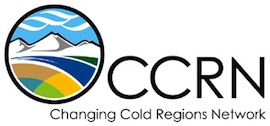
Dr. Daqing Yang
Environment and Climate Change Canada
Research areas
Precipitation is a key research issue for many aspects of the CCRN. As the ECCC collaborator, Dr. Yang worked closely with colleagues at GIWS/U of SK to improve precipitation data quality over the CCRN domain and to examine the inconsistency in snow gauge observations between the US and Canada border.
With the support and collaboration of many CCNR PIs, Drs. Pan/Yang/Li and others (Alan Barr, Warren Helgason, Masaki Hayashi, Philip Marsh, John Pomeroy, and Richard Janowicz) carried out precipitation data collection and analysis for all the sites in the CCRN network. They assess a filtering procedure on accumulating precipitation gauge measurements and quantify the effects of bias corrections for wind-induced undercatch across four ecoclimatic regions in western Canada, including the permafrost regions of the sub-arctic, the Western Cordillera, the boreal forest, and the prairies. The bias corrections increased monthly precipitation by up to 163 % at windy sites with short vegetation and sometimes modified the seasonal precipitation regime, whereas the increases were less than 13 % at sites shielded by forest. On a yearly basis, the increase of total precipitation ranged from 8 to 20 mm (3– 4 %) at sites shielded by vegetation and 60 to 384 mm (about 15–34 %) at open sites. In addition, the bias corrections altered the seasonal precipitation patterns at some windy sites with high snow percentage ( > 50 %). This analysis clearly highlights the need for and importance of precipitation bias corrections at both research sites and operational networks for water balance assessment and the validation of cold regions hydrology models.
Dr. Yang also worked with a graduate student (Lucia Scuff) and Drs. Li, and Mekis to examine the inconsistency in gauge precipitation observations across the border of Alaska and Yukon. They analyzed the precipitation measurements by the national standard gauges (US National Weather Service (NWS) 8 in. gauge and Canadian Nipher gauge) and the bias-corrected data to account for wind effect on the gauge catch, wetting loss and trace events. The bias corrections show a significant amount of errors in the gauge records due to the windy and cold environment in the northern areas of Alaska and Yukon. Monthly corrections increase solid precipitation by 136 % in January and 20 % for July at the Barter Island in Alaska, and about 31 % for January and 4 % for July at the Yukon stations. Regression analyses of the monthly precipitation data show a stronger correlation for the warm months (mainly rainfall) than for cold month (mainly snowfall) between the border station pairs, and small changes in the precipitation relationship due to the bias corrections. Double mass curves indicate changes in the cumulative precipitation across the border. This change leads to a smaller and inverted precipitation gradient across the border, representing a significant modification in the precipitation pattern over the northern region. This study quantifies inconsistency in the precipitation measurements across the USA–Canada border. This discontinuity is greater for snowfall than for rainfall, as gauge snowfall observations have large errors in windy and cold conditions. This result will impact regional, particularly cross-border, climate and hydrology investigations.
